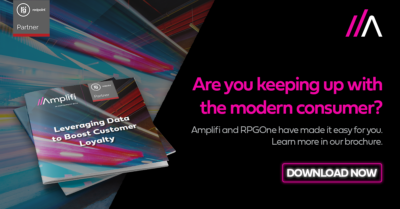Welcome to the era of the new modern consumer. The impact of COVID-19 has altered nearly everything about our society. And with it, a new consumer persona has emerged.
This consumer is savvier, always connected, and more open to brands and experiences that meet their precise needs. For retailers, the challenge lies in understanding what drives their behavior and preferences – and how to reach them on a deeper level to earn their loyalty.
Breaking Down the New Modern Consumer
 Much goes into understanding who your customer is and what type of experiences lead to loyalty. When segmenting your customers, think about their generational traits (e.g., Gen Z, Millennial, etc.), as well as their demographics, life stages, beliefs, and beyond.
Much goes into understanding who your customer is and what type of experiences lead to loyalty. When segmenting your customers, think about their generational traits (e.g., Gen Z, Millennial, etc.), as well as their demographics, life stages, beliefs, and beyond.
Also, recognize that regardless of segmentation, the new ‘modern consumer’ also:
- Seeks the opportunity to buy and shop online whenever possible
- Uses multiple channels to browse and buy
- Takes considerable time to research what they want
- Wants retailers to anticipate and cater to their individual needs
- Has very little tolerance for friction (less patience = more bounce)
- Won’t grant loyalty to companies with unsatisfying experiences at any stage of the process
Changing Expectations of Digital Experiences
With so many consumers shopping online, it’s worth the extra time to evaluate digital expectations.
An Experian report states that 60% of customers have higher expectations of their digital experience than before COVID-19, so companies can’t be content with what worked in previous years.
Examples of these evolving expectations span all retail areas, though a few stand out:
- General Retail: The pandemic consumers’ journey has strayed far from linear. Their path to purchase jumps across apps, to your website, on social sites, via curbside, and in-store. Despite their erratic interactions, they expect a seamless experience. Furthermore, segments like beauty – which saw lower online sales due to the preference for in-store browsing – have experienced a radical uptick in e-commerce.
- Clothing and Apparel: Customers expect easy and cost-effective delivery and returns. Shoppers will purchase multiple sizes and styles online, try everything on, then return all but their absolute favorites. If your shipping and return processes are slow or cumbersome, consumers will look elsewhere.
- Grocery: During the pandemic, 49% of shoppers started or increased buying groceries online. And if the experience with shopping, purchasing, delivery, or BOPIS (Buy Online, Pickup In-Store) is underwhelming, they won’t stick around. In fact, 76% of online grocery shoppers said they would switch grocers to one that offered a better shopping experience.
These are just a few examples, but they show how the modern consumer has changed.
And if that weren’t enough change for retailers to embrace, there’s another element at play: our obsession with research.
For the New Modern Consumer, Research Still Reigns
With so much time to shop online (thanks, quarantines), the consumer obsession with product research continues to gain steam. According to a GE Capital Bank study, 81% of retail shoppers research products online before buying.
What does that mean for retailers? By the time a consumer makes a purchase with your brand or business, they’ve already invested a significant amount of time evaluating their choices.
At that point, you’ve fought the battle to make the sale, hopefully by providing the right product experience. Now comes the even harder part: winning the war against your competition to earn and keep your customer’s loyalty.
So, what’s the secret? It comes down to knowing your customer and personalizing their experiences — and that requires well-managed, well-executed customer data.
How Much Does Personalization Really Matter?
An Epsilon research report showed that 80% of consumers are more likely to make a purchase when brands offer personalized experiences. And McKinsey found that personalization at scale lifts total retail sales by increasing loyalty and share-of-wallet among already loyal customers.
Greater personalization means more happy customers, higher sales, and increased loyalty. The holy grail is when your customers feel you intrinsically understand who they are, what they value, and what they need.
The key is utilizing high-quality customer data. Effectively collecting, managing, and mining customer data empowers retailers to craft the personalized offers, recommendations, and experiences that evolved consumers crave — across channels and at every stage of their journey.
What type of customer data do you need? And how should you apply that data to improve loyalty?
Stay tuned – because we’re answering those questions as we continue our Customer Data & Loyalty series!
More Tips on Customer Data & Loyalty
In this series, we’re exploring how well-managed customer data helps you deliver the multichannel segmentation and hyper-personalized experiences that will win over the modern consumer.
This is a critical component – because everyone has customer data. It’s how you leverage it that makes all the difference.
The gurus at Redpoint Global will join Amplifi to share their tips on applying the right tools, people, and processes to turn your shoppers into repeat buyers and, ultimately, loyal customers.
And, if you want tips now on ramping up your customer data and loyalty practices, download our guide here.


